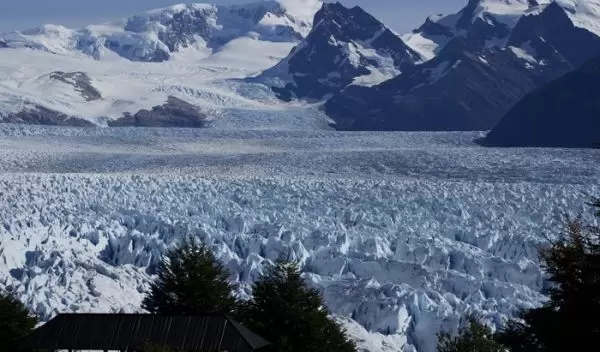
Seismic study reveals key reason Patagonia is rising as glaciers melt
The icefields that stretch for hundreds of miles atop the Andes Mountains in Chile and Argentina are melting at some of the fastest rates on the planet. The ground that was beneath this ice is also shifting and rising as these glaciers disappear. Now, U.S. National Science Foundation-supported geologists have discovered a link among recent ice mass loss, rapid rock uplift and a gap between tectonic plates that underlie Patagonia.
Scientists at Washington University in St. Louis, led by seismologist Douglas Wiens, recently completed one of the first seismic studies of the Patagonian Andes. In the journal Geophysical Research Letters, they describe and map out local subsurface dynamics.
"Variations in the size of glaciers as they grow and shrink, combined with the mantle structure we've imaged in this study, are driving rapid and spatially variable uplift in this region," said Hannah Mark of the Woods Hole Oceanographic Institution, the first author of the publication.
The seismic data Mark and Wiens analyzed reveal that a gap in the down-going tectonic plate about 60 miles beneath Patagonia has enabled hotter, less viscous mantle material to flow underneath South America.
Above this gap, the icefields have been shrinking, removing weight that previously caused the continent to flex downward. The scientists found very low seismic velocity within and around the gap, as well as a thinning of the rigid lithosphere overlying the gap.
These mantle conditions are driving many of the recent changes observed in Patagonia, including the rapid uplift in certain areas once covered by ice.
When glaciers melt, a tremendous weight is lifted from the ground that once supported them. Huge amounts of water, previously stored as ice, flow toward the ocean. The newly unburdened earth rebounds and rises. Geologists see evidence of this combination of ice mass changes and uplift in places all over the world.
The ongoing movement of land -- known as glacial isostatic adjustment – matters, among other reasons, because it affects predictions for sea level rise under future climate warming scenarios.
Mark said that one of the most interesting things discovered in this study was that the hottest and least viscous parts of the mantle were found in the region of the gap, or slab window, below the part of the Patagonia icefields that most recently opened up.


